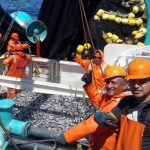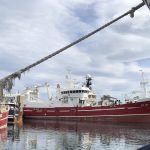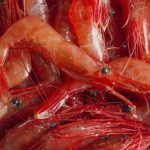This $120,000 allocation, from the Development and Better Interest Fund, will be used to support a collaborative research project between the WA Department of Fisheries and CSIRO’s Wealth from Oceans Flagship, to collect information on the movements and behaviour of white sharks in the region.
It is hoped that a better understanding of this species’ occurrence off Perth’s beaches may ultimately help to reduce the risk of attacks on people.
An initial network of acoustic receiver “listening stations” was deployed off the Perth coastline last year, in conjunction with a program to fit uniquely coded acoustic transmitters (tags) to 100 white sharks.
The additional funding, sourced from a fund built from fishing industry contributions, will help in evaluating the potential benefits of new communicating receivers that can provide real-time alerts if tagged sharks are detected at Perth beaches.
Senior Research Scientist Dr Rory McAuley, who leads the Department of Fisheries’ involvement in the Shark Monitoring Network project, said these new receivers could directly alert public safety agencies if tagged sharks came close to monitored beaches.
“The data we collect will help us understand when, where and why white sharks visit our beaches and the communication capabilities of these new receivers may allow us to warn bathers of a tagged shark’s presence before they encounter each other,” Dr McAuley said.
“This project complements strategies in place to identify and monitor shark hazards.
“We have an eye in the sky with Westpac helicopter patrols in summer and shore-based beach monitoring by Surf Lifesaving WA, but the new technology provides an opportunity to listen for tagged sharks as well.
“Unlike other monitoring approaches, listening stations can detect tagged sharks 24 hours a day (365 days a year) and these new receivers may also alert authorities to the presence of tagged sharks at our beaches in near to real time.”
Dr McAuley said while the program would only tag a small proportion of white sharks found in WA waters, it would provide important information on the species’ movement patterns along the Perth coast that may be useful in predicting the risk of interactions.
“These acoustic receivers have the capacity to assist a variety of research projects because they can monitor many thousands of different tags deployed on many species of finfish and sharks,” he said.
“Also, because the battery life of electronic tags has greatly improved in recent years, listening stations will potentially be able to detect tagged sharks for up to 10 years.
“Although our current target is to tag 100 sharks, if this monitoring approach proves to be successful the number of tagged sharks could be increased over time.”
Dr McAuley said that white sharks would be tagged opportunistically off the Western Australian coast, with most expected to be tagged off South Australia where they were more commonly found.
“CSIRO research has already shown that sharks tagged at the Neptune Islands in South Australia have migrated along the WA coastline, past Perth,” he said.
“The program has so far tagged 55 white sharks jointly with CSIRO researchers.
“One shark tagged off Port Lincoln late last year was detected off Ningaloo Reef six weeks later.”
CSIRO Senior Research Scientist, Barry Bruce, who leads the CSIRO component of the project, said this study was part of national and international initiatives to deploy listening stations throughout Australian waters.
“The Australian Acoustic Tracking and Monitoring System (AATAMS), which is part of the Integrated Marine Observing System (IMOS), as well as the Ocean Tracking Network (OTN) will provide an unparalleled opportunity to learn about the movements of many different species of tagged marine animals including white sharks,” Mr Bruce said.
Dr McAuley said it was also hoped this project would provide further opportunities for partnerships with local government, as well as corporate and private sponsors in Perth and regional areas, to build a larger network of listening stations, tag more sharks, or to meet specific community concerns.
“While this project will expand the strategies used in WA to deal with shark hazards, no monitoring method can replace the need for common sense and vigilance by swimmers and other people who enjoy activities in the ocean,” he said.
Shark safety information is available on the Department of Fisheries website at www.fish.wa.gov.au (click on the shark icon on the home page).








